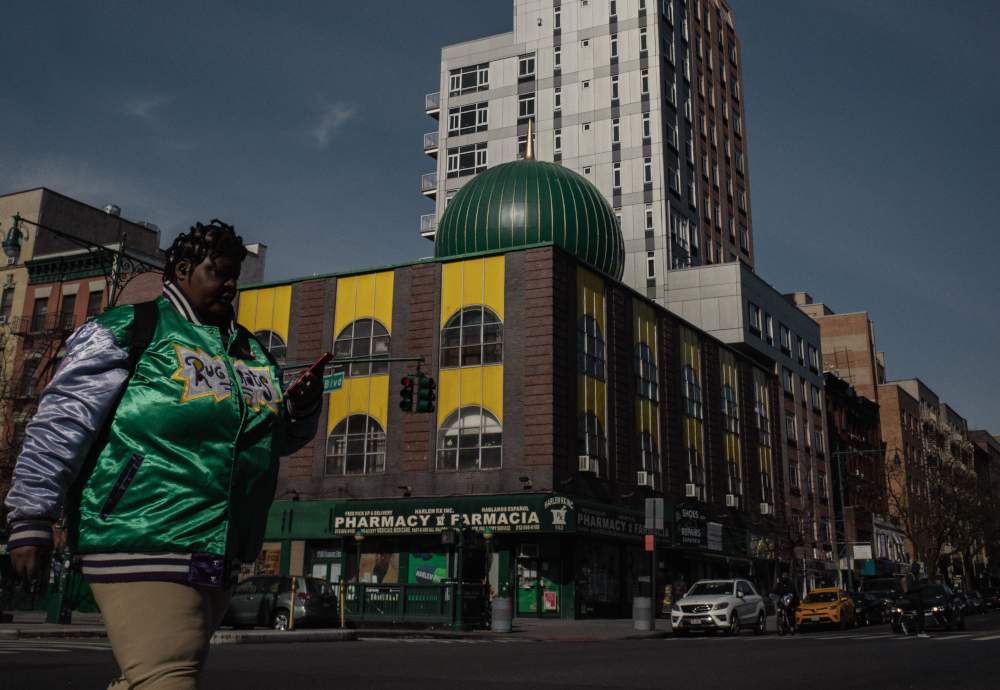Rome, the essence of the Harlem neighborhood through the shots of a filmmaker
Magic Theatre is the exhibition that Lucky Red is showcasing at the Quattro Fontane cinema in Rome to promote in an innovative and engaging way the screening of A Thousand and One, an award-winning film at Sundance 2023. The exhibition aims to offer the audience afilm experience enriched by an unusual cultural moment: a photo exhibition dedicated to the same places narrated in the film. To narrate theiconic New York neighborhood of Harlem, Lucky Red involved another filmmaker, Stefano Lodovichi, who documented it with the eye of someone who knows how to capture a unique urban reality. The exhibition has free admission and is open until July 28, 2023; it is curated by Mattia Morandi and Umberto Pastore, organized by Creation Culture and presented by Lucky Red.
The film, released in Italian theaters on June 29, is directed by U.S. director A.V. Rockwell and stars singer Teyana Taylor, who plays the role of a mother fiercely determined to secure a future for her son. Teyana Taylor is Inez, a determined and impetuous woman who kidnaps her six-year-old son Terry from the national foster care system. Clinging to each other, mother and son try to regain a sense of home, identity and stability in a rapidly changing New York City. Through the stories of the two protagonists, the film also traces the evolution of New York City over the past three decades, chronicling anode to the power of family, the only lifeline in a changing world that disregards the lives of the least of these. And in particular the famous African American neighborhood of Harlem, a neighborhood in Upper Manhattan, New York City, bounded roughly by the Hudson River, the Harlem River, Fifth Avenue and Central Park. Originally founded by the Dutch in 1658 as Nieuw Haarlem, from the Dutch city of Haarlem, it remained farmland for over two hundred years. The African American population arrived in Harlem in the early twentieth century and grew by more than 40 percent between 1910 and 1930, from 50,000 to more than 200,000. So much so that in the 1920s the so-called Harlem Renaissance, a movement in which black communities reclaimed their identity, was born here. Music played a key role in this new identity: the blues and especially jazz became the main musical genres of the time. Harlem thus became a symbol of the African American struggle for civil and economic equality, while at the same time emerging as a thriving center of African American culture, art, and music.
Stefano Lodovichi has selected twenty-four works for the Roman exhibition that offer the public the opportunity to live alongside the screening of A Thousand and One, a sort of extension of the film, to make visitors relive the atmosphere of the film, to deepen their understanding of a neighborhood so strongly anchored in the common imagination but at the same time constantly evolving.
“It is not easy, as a director, to reinterpret a film so intimate and with such a strong identity,” said Lodovichi. “A story as universal as it is far from my imagination. As a non-American, as a non-New Yorker, as a non-Harlem resident. As a white man. But cinema, its language and its codes, are universal.”
In his shots, the iconic people and places of the New York neighborhood emerge in two different approaches: on the one hand, the street photographer ’s perspective captures faces and moments of humanity with powerful and immediate shots; on the other, the documentarian ’s eye shows the present without interfering with reality. The photos portray architectural perspectives, urban glimpses and the souls of people, creating a unique visual portrait of Harlem. A diary by images of an itinerant journey through fragments of urban spaces and humanity, succeeding in conveying the unique atmosphere of Harlem as a kind of visual portrait of the neighborhood.
The audience is confronted with multiple stories of the present through continuous references to the film A Thousand and One.
Image: Stefano Lodovichi, No. 07, detail ( 2023) ©StefanoLodovichi
 |
| Rome, the essence of the Harlem neighborhood through the shots of a filmmaker |
Warning: the translation into English of the original Italian article was created using automatic tools. We undertake to review all articles, but we do not guarantee the total absence of inaccuracies in the translation due to the program. You can find the original by clicking on the ITA button. If you find any mistake,please contact us.




























